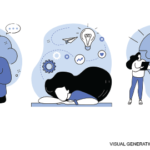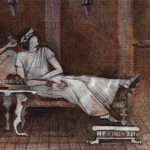Happy New Year, readers of The Rheumatologist! As the incoming editor, I want to welcome you back in this new year and hope that you’ll stick around, month after month, as we journey together through 2023. As the year progresses, you may notice some departures from what we have previously done, but I also wish to reassure you that the spirit, ethos and love that Philip Seo, MD, MHS, and his predecessors imbued into this publication will endure both this year and in years beyond.

Bharat Kumar, MD
Toward that end, January is a perfect time for perspective taking. Some of you may be aware that the name of the month of January is derived from Janus, the Roman god of beginnings and endings. Those of us within the rheumatology community may even be aware that this same Roman god, Janus, is the namesake for the family of tyrosine kinases that we now refer to as JAKs. Janus has also lent his name to something we are less familiar with, but should be embracing in rheumatology: Janusian thinking.
Novel & Yet Intimately Familiar
Janus has been classically portrayed as having two faces looking in opposite directions. Albert Rothenberg, MD, who coined the term in 1971, was inspired by this portrayal and used it to describe a creative process whereby two contradictory concepts, ideas or images are held simultaneously.1 He later investigated Nobel Prize laureates known for their creativity and insightfulness, and found that they embraced this paradoxical way of processing information and viewing the world.2 Unfortunately, none of those he studied were rheumatologists. But I can tell you that some of the most successful rheumatologists are also Janusian thinkers.
It’s a little mind-bending so I’ll bring up a classic example that Dr. Rothenberg mentioned in his article. Albert Einstein, as he was composing his theory of general relativity, identified a core paradox: The magnitude of gravity that is pulling in one direction is equivalent to the acceleration in the opposite direction. To answer this paradox of moving while resting, he constructed a mental framework. An observer who jumps off a roof and releases an object at the same time will not notice any movement because he will not find any evidence of a gravitational field. By extending this metaphor (and remember, I am not a physicist), he derived the concept that gravity and motion can affect intervals of time and space.3


